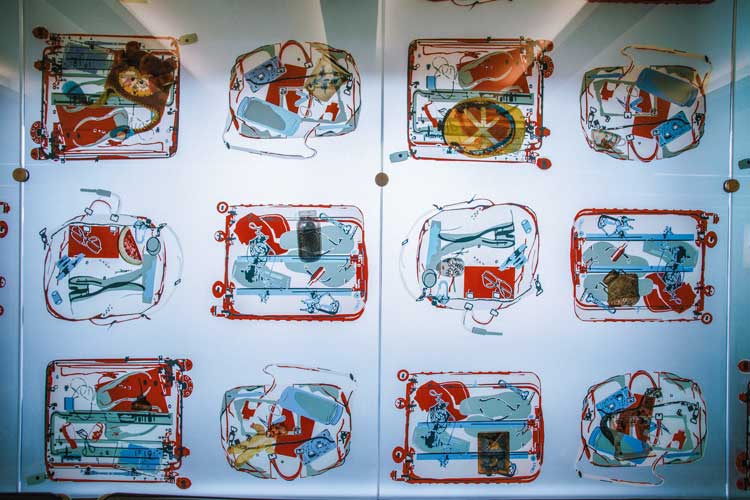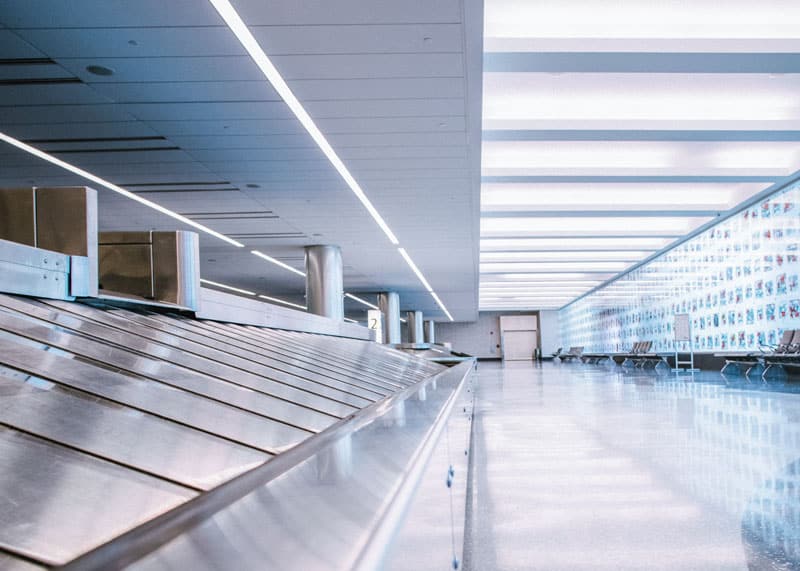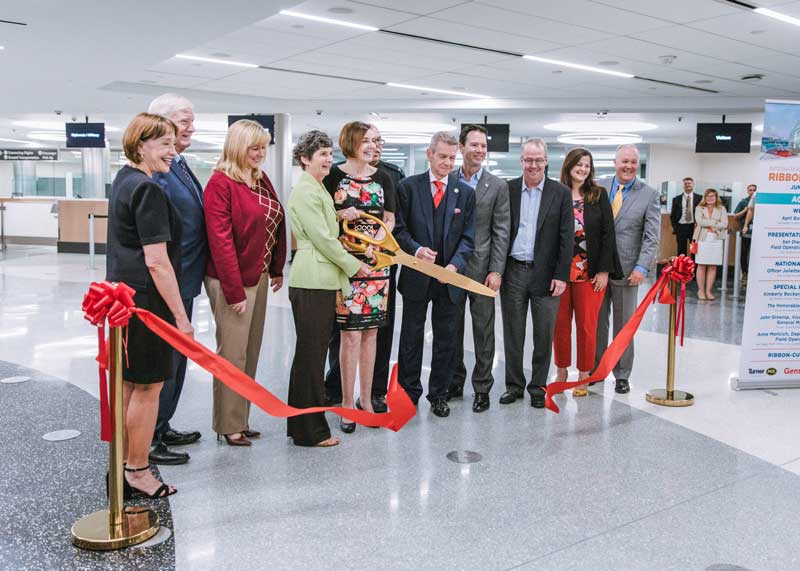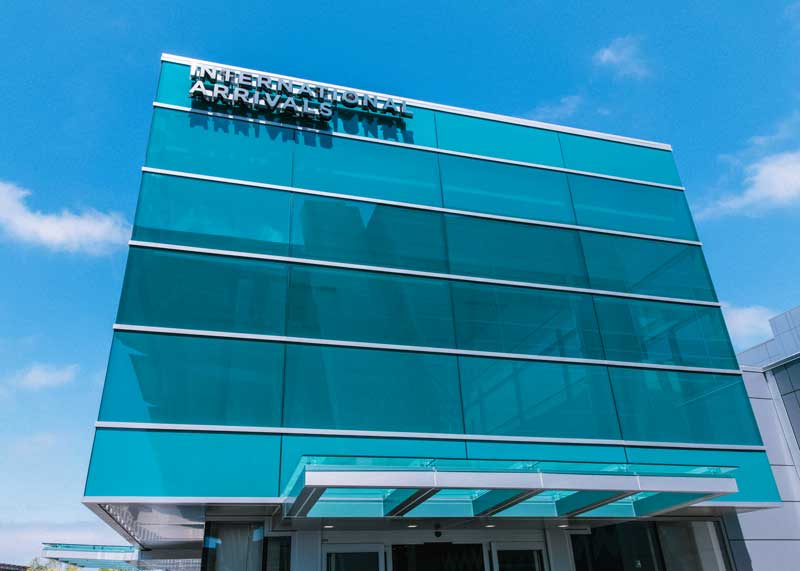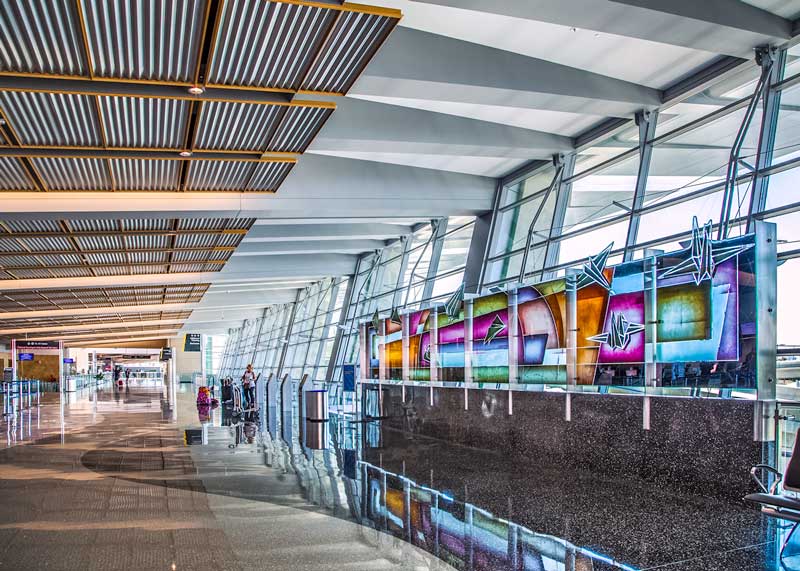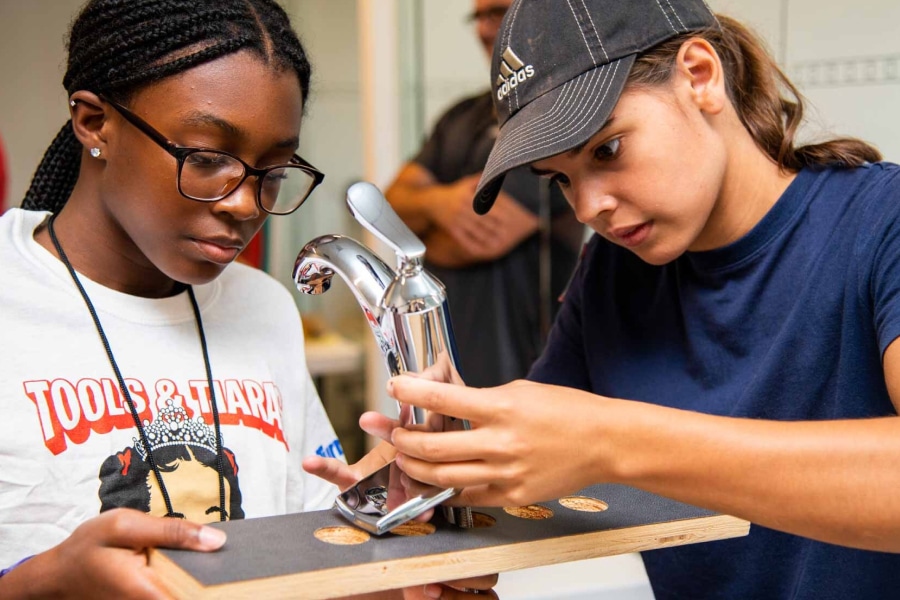The San Diego International Airport (SAN) International Arrivals facility just got a major upgrade. In 2017, the airport boarded nearly 22 million passengers, making it one of the busiest airports in California. Of those, over 800,000 were international passengers—a number that has continued to rise. To help the airport meet and exceed the expectations of this growing class of travelers, the PCL|Turner joint venture team completed construction of a beautiful 130,000 square-foot facility this past June, featuring the latest technology to ensure safety and ease of travel.
The approximately $229 million project came with a set of challenges. An aggressive schedule and a workforce of over 3,500 construction workers alone meant that coordination was absolutely central to the success of the joint venture in completing the project on time, on budget, and to the satisfaction of their client.
To that end, the contractors relied on a suite of technologies to manage document coordination and review, especially Bluebeam Revu. Kevin Marino, the VDC manager for PCL Construction in San Diego who worked on the airport, said that they used Revu at various stages of the project, utilizing it to communicate with ownership, design partners and trades. Using Bluebeam Studio, the real-time cloud capability in Revu, allowed for access anywhere, anytime, as well as instant document sharing and version control. The PCL|Turner team “reduced process inefficiency during information handoff with real-time communication by all users,” Marino added. In addition, using Revu led to a 33% reduction in payment waiting time compared to using traditional delivery methods.
The new international arrivals facility is nearly five times larger than the building it replaced and will be one of the first in the nation to utilize 100% biometric or facial recognition technology on arriving passengers. It also includes two stunning art installations, four escalators, three elevators, nearly 450 truckloads of concrete and 200,000 pounds of sheet metal ductwork. With that level of complication, it’s no surprise that meeting the project schedule was one of the joint venture’s biggest successes, said Marino. It’s not hard to see why: incredibly, the building received its certificate of occupancy exactly one year after the project broke ground, an incredible feat for a construction project of this size and scope. That deadline would have been nearly unattainable if it weren’t for the joint venture’s embrace of construction technologies like Revu, which helped the industry speed up, scale up and streamline their processes.

